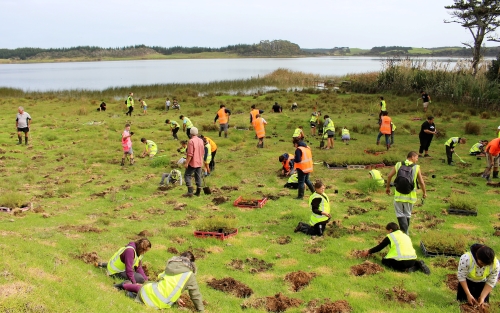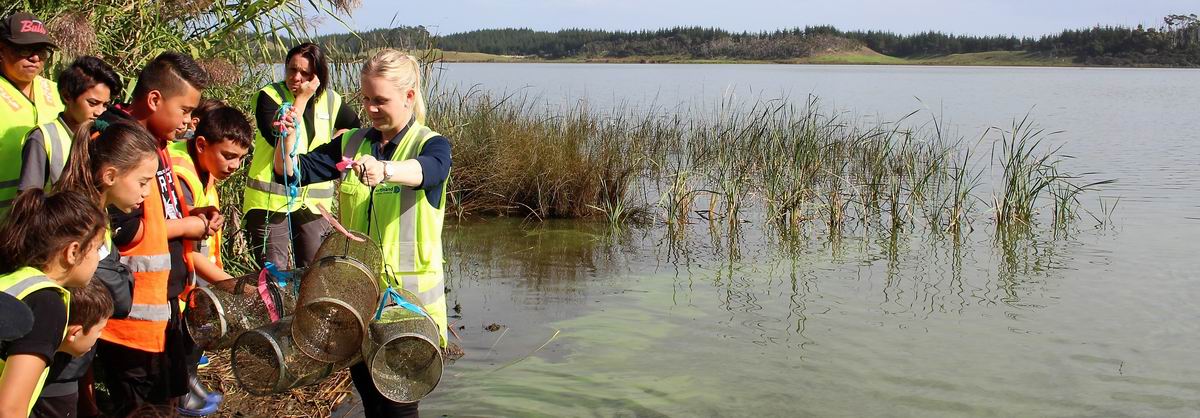Extra protection for Northland dune lakes
14 Aug 2019, 11:00 AM
Good local community support and co-funding from regional and central government means several of Northland’s special freshwater dune lakes now have much-needed new fencing and/or stock water supplies in place.
The Northland Dune Lakes Strategic Water Quality Improvement project aims to invest almost $1.6M over a five-year period to improve more than two dozen of the region’s fragile dune lakes in the Aupouri (Far North) and Pouto/Kai Iwi Lakes (Kaipara) areas.
The project is co-funded by the Ministry for the Environment’s Freshwater Improvement Fund and Northland Regional Council (NRC), each contributing $782,697 to this remedial work as part of its wider commitment toward improving regional water quality.
The Ministry’s fund focusses on waterbodies in vulnerable catchments that are showing signs of stress, but which crucially have not yet reached a ‘tipping point’ when it becomes more expensive and more difficult to restore them to good health.
 Many hands…Lake Waiparera on the Aupouri Peninsula is one of a number of Northland dune lakes being targeted to restore water quality and protect biodiversity, though fencing, planting and other work with the support of local communities.
Many hands…Lake Waiparera on the Aupouri Peninsula is one of a number of Northland dune lakes being targeted to restore water quality and protect biodiversity, though fencing, planting and other work with the support of local communities.
Bruce Howse, the NRC’s Group Manager – Environmental Services, says the dune lakes project include initiatives to reduce nutrient levels – including fencing to keep stock out and associated reticulation to provide stock water – as well as work to remove and control pest fish and water weeds.
“These all involve a strong degree of collaboration between our council, central government, local iwi and our primary sector with a shared goal of improving freshwater quality.”
Mr Howse says the most recently-completed work has occurred at Lakes Wahakari and Waiparera in the Far North, as well as Lake Shag and privately owned Midgley’s Lake, the latter two both in the Kai Iwi Lakes area.
“Lake Wahakari covers roughly 90 hectares and is a water source for some in for the Te Kao community, so the fencing work along its northern lakefront which has stopped stock access is long overdue and a big win for the wider community.”
Similarly, the recent completion of two fencing projects at Lake Waiparera means the entire 108ha lake is now also fully fenced to exclude stock.
“Other work being carried out at Waiparera includes pest fishing and eradication of the invasive water weeds Lagarosiphon and Ceratophyllum.”
Further south, Mr Howse says Lake Shag, just north of the popular Kai Iwi Lakes, has now also been fully fenced and reticulated.
“We’re also considering adding this lake to our quarterly water monitoring schedule to track future water quality improvements and Te Roroa is also investigating the potential of planting out a large area between the fence and the lake, which if it goes ahead would also contribute to improved water quality.”
Lastly, Midgley’s Lake has been reticulated with intentions of fencing it through separate regional council funding later this year.
“This is a lake where council is also targeting grass carp removal over the next three years, so these three actions collectively should help improve water quality.”
Further information on the project aiming to restore water quality and protect biodiversity in Northland dune lakes is available online via www.nrc.govt.nz/dunelakesproject

Brooke Hartigan (Northland Regional Council’s Biodiversity Advisor – Lakes) shows Far North school students traps used to catch pest fish at Lake Waiparera. Dune lakes on the Aupouri Peninsula are among a number in Northland being targeted to restore water quality and protect biodiversity, though fencing, planting and the removal of pest fish and water weeds.
